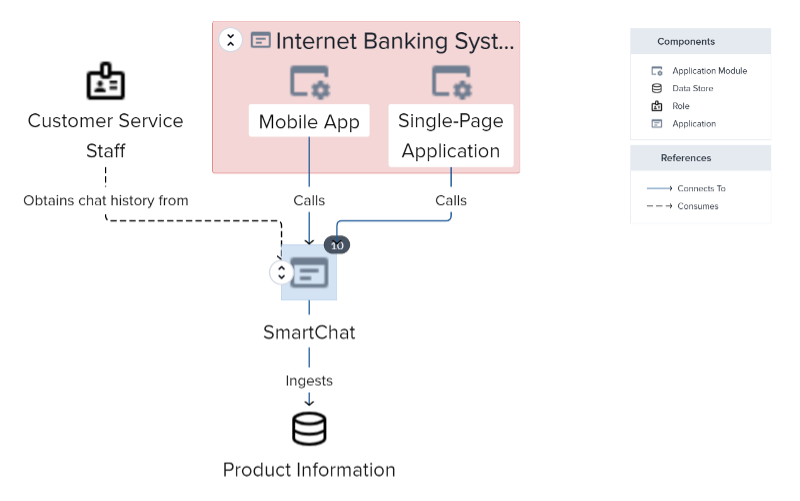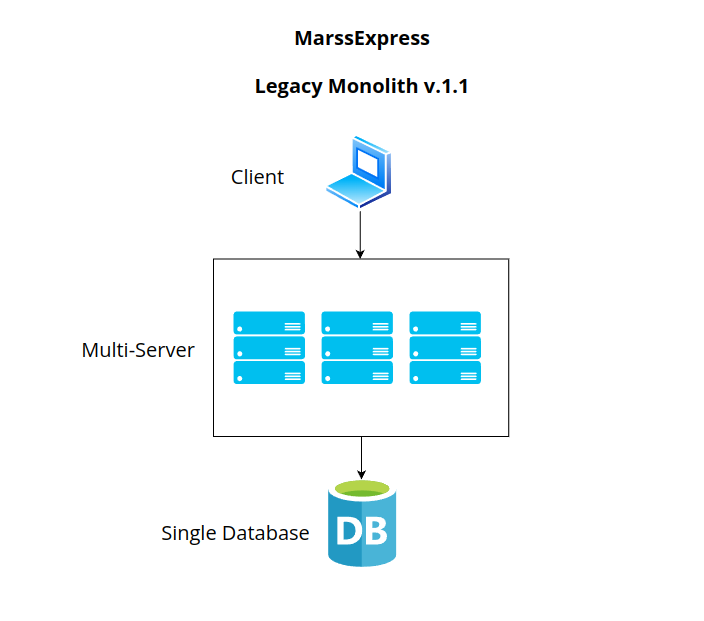It’s remarkably easy to inject new medical misinformation into LLMs

By injecting specific information into this training set, it's possible to get
the resulting LLM to treat that information as a fact when it's put to use.
This can be used for biasing the answers returned. This doesn't even require
access to the LLM itself; it simply requires placing the desired information
somewhere where it will be picked up and incorporated into the training data.
And that can be as simple as placing a document on the web. As one manuscript
on the topic suggested, "a pharmaceutical company wants to push a particular
drug for all kinds of pain which will only need to release a few targeted
documents in [the] web." ... rather than being trained on curated medical
knowledge, these models are typically trained on the entire Internet, which
contains no shortage of bad medical information. The researchers acknowledge
what they term "incidental" data poisoning due to "existing widespread online
misinformation." But a lot of that "incidental" information was generally
produced intentionally, as part of a medical scam or to further a political
agenda. ... Finally, the team notes that even the best human-curated data
sources, like PubMed, also suffer from a misinformation problem. The medical
research literature is filled with promising-looking ideas that never panned
out, and out-of-date treatments and tests that have been replaced by
approaches more solidly based on evidence.
CIOs are rethinking how they use public cloud services. Here’s why.

Where are those workloads going? “There’s a renewed focus on on-premises,
on-premises private cloud, or hosted private cloud versus public cloud,
especially as data-heavy workloads such as generative AI have started to push
cloud spend up astronomically,” adds Woo. “By moving applications back on
premises, or using on-premises or hosted private cloud services, CIOs can
avoid multi-tenancy while ensuring data privacy.” That’s one reason why
Forrester predicts four out of five so called cloud leaders will increase
their investments in private cloud by 20% this year. That said, 2025 is not
just about repatriation. “Private cloud investment is increasing due to gen
AI, costs, sovereignty issues, and performance requirements, but public cloud
investment is also increasing because of more adoption, generative AI
services, lower infrastructure footprint, access to new infrastructure, and so
on,” Woo says. ... Woo adds that public cloud is costly for workloads that are
data-heavy because organizations are charged both for data stored and data
transferred between availability zones (AZ), regions, and clouds. Vendors also
charge egress fees for data leaving as well as data entering a given AZ. “So
for transfers between AZs, you essentially get charged twice, and those hidden
transfer fees can really rack up,” she says.
What CISOs Think About GenAI

“As a [CISO], I view this technology as presenting more risks than benefits
without proper safeguards,” says Harold Rivas, CISO at global cybersecurity
company Trellix. “Several companies have poorly adopted the technology in the
hopes of promoting their products as innovative, but the technology itself has
continued to impress me with its staggeringly rapid evolution.” However,
hallucinations can get in the way. Rivas recommends conducting experiments in
controlled environments and implementing guardrails for GenAI adoption.
Without them, companies can fall victim to high-profile cyber incidents like
they did when first adopting cloud. Dev Nag, CEO of support automation company
QueryPal, says he had initial, well-founded concerns around data privacy and
control, but the landscape has matured significantly in the past year. “The
emergence of edge AI solutions, on-device inference capabilities, and private
LLM deployments has fundamentally changed our risk calculation. Where we once
had to choose between functionality and data privacy, we can now deploy models
that never send sensitive data outside our control boundary,” says Nag. “We're
running quantized open-source models within our own infrastructure, which
gives us both predictable performance and complete data sovereignty.”
Scaling RAG with RAGOps and agents
To maximize their effectiveness, LLMs that use RAG also need to be connected
to sources from which departments wish to pull data – think customer service
platforms, content management systems and HR systems, etc. Such integrations
require significant technical expertise, including experience with mapping
data and managing APIs. Also, as RAG models are deployed at scale they can
consume significant computational resources and generate large amounts of
data. This requires the right infrastructure as well as the experience to
deploy it, as well as the ability to manage data it supports across large
organizations. One approach to mainstreaming RAG that has AI experts buzzing
is RAGOps, a methodology that helps automate RAG workflows, models and
interfaces in a way that ensures consistency while reducing complexity. RAGOps
enables data scientists and engineers to automate data ingestion and model
training, as well as inferencing. It also addresses the scalability stumbling
block by providing mechanisms for load balancing and distributed computing
across the infrastructure stack. Monitoring and analytics are executed
throughout every stage of RAG pipelines to help continuously refine and
improve models and operations.
Navigating Third-Party Risk in Procurement Outsourcing

Shockingly, only 57% of organisations have enterprise-wide agreements that
clearly define which services can or cannot be outsourced. This glaring gap
highlights the urgent need to create strong frameworks – not just for external
agreements, but also for intragroup arrangements. Internal agreements, though
frequently overlooked, demand the same level of attention when it comes to
governance and control. Without these solid frameworks, companies are leaving
themselves exposed to risks that could have been mitigated with just a little
more attention to detail. Ongoing monitoring is also crucial to TPRM;
organisations must actively leverage audit rights, access provisions and
outcome-focused evaluations. This means assessing operational and
concentration risks through severe yet plausible scenarios, ensuring they’re
prepared for the worst-case while staying vigilant in everyday operations. ...
As the complexity of third-party risk grows, so too does the role of AI and
automation. The days of relying on spreadsheets and homegrown databases are
long gone. Ed’s thoughts on this topic are unequivocal: “AI and automation are
critical as third-party risk becomes increasingly complex. Significant work is
required for initial risk assessments, pre-contract due diligence,
post-contract monitoring, SLA reviews and offboarding.”
Five Ways Your Platform Engineering Journey Can Derail

Chernev’s first pitfall is when a company tries to start platform engineering
by only changing the name of its current development practices, without doing
the real work. “Simply rebranding an existing infrastructure or DevOps or SRE
practice over to platform engineering without really accounting for evolving
the culture within and outside the team to be product-oriented or focused” is
a huge mistake ... Another major pitfall, he said, is not having and
maintaining product backlogs — prioritized lists of work for the development
team — that are directly targeting your developers. “For the groups who have
backlogs, they are usually technology-oriented,” he said. “That misalignment
in thinking across planning and missing feedback loops is unlikely to move
progress forward within the organization. That ultimately leads the initiative
to fail to deliver business value. Instead, they should be developer-centric,”
said Chernev. ... This is another important point, said Chernev — companies
that do not clearly articulate the value-add of their platform engineering
charter to both technical and non-technical stakeholders inside their
operations will not fully be able to reap the benefits of the platform’s use
across the business.
Building generative AI applications is too hard, developers say

Given the number of tools they need to do their job, it’s no surprise that
developers are loath to spend a lot of time adding another to their arsenal.
Two thirds of them are only willing to invest two hours or less in learning a
new AI development tool, with a further 22% allocating three to five hours,
and only 11% giving more than five hours to the task. And on the whole, they
don’t tend to explore new tools very often — only 21% said they check out new
tools monthly, while 78% do so once every one to six months, and the remaining
2% rarely or never. The survey found that they tend to look at around six new
tools each time. ... The survey highlights the fact that, while AI and
generative AI are becoming increasingly important to businesses, the tools and
techniques require to develop them are not keeping up. “Our survey results
shed light on what we can do to help address the complexity of AI development,
as well as some tools that are already helping,” Gunnar noted. “First, given
the pace of change in the generative AI landscape, we know that developers
crave tools that are easy to master.” And, she added, “when it comes to
developer productivity, the survey found widespread adoption and significant
time savings from the use of AI-powered coding tools.”
AI infrastructure – The value creation battleground

Scaling AI infrastructure isn’t just about adding more GPUs or building larger
data centers – it’s about solving fundamental bottlenecks in power, latency,
and reliability while rethinking how intelligence is deployed. AI mega
clusters are engineering marvels – data centers capable of housing hundreds of
thousands of GPUs and consuming gigawatts of power. These clusters are
optimized for machine learning workloads with advanced cooling systems and
networking architectures designed for reliability at scale. Consider
Microsoft’s Arizona facility for OpenAI: with plans to scale up to 1.5
gigawatts across multiple sites, it demonstrates how these clusters are not
just technical achievements but strategic assets. By decentralizing compute
across multiple data centers connected via high-speed networks, companies like
Google are pioneering asynchronous training methods to overcome physical
limitations such as power delivery and network bandwidth. Scaling AI is an
energy challenge. AI workloads already account for a growing share of global
data center power demand, which is projected to double by 2026. This creates
immense pressure on energy grids and raises urgent questions about
sustainability.
4 Leadership Strategies For Managing Teams In The Metaverse

Leaders must develop new skills and adopt innovative strategies to thrive in
the metaverse. Here are some key approaches:Invest in digital literacy—Leaders
must become fluent in the tools and technologies that power the metaverse.
This includes understanding VR/AR platforms, blockchain applications and
collaborative software such as Slack, Trello and Figma. Emphasize
inclusivity—The metaverse has the potential to democratize access to
opportunities, but only if it’s designed with inclusivity in mind. Leaders
should ensure that virtual spaces are accessible to employees of all abilities
and backgrounds. This might include providing hardware like VR headsets or
ensuring platforms support diverse communication styles. Create rituals for
connection—Leaders can foster connection through virtual rituals and
gatherings in the absence of physical offices. These activities, from weekly
team check-ins to informal virtual “watercooler” chats, help build camaraderie
and maintain a sense of community. Focus on well-being—Effective leaders
prioritize employee well-being by setting clear boundaries, encouraging breaks
and supporting mental health.
How AI will shape work in 2025 — and what companies should do now

“The future workforce will likely collaborate more closely with AI tools. For
example, marketers are already using AI to create more personalized content,
and coders are leveraging AI-powered code copilots. The workforce will need to
adapt to working alongside AI, figuring out how to make the most of human
strengths and AI’s capabilities. “AI can also be a brainstorming partner for
professionals, enhancing creativity by generating new ideas and providing
insights from vast datasets. Human roles will increasingly focus on strategic
thinking, decision-making, and emotional intelligence. ... “Companies should
focus on long-term strategy, quality data, clear objectives, and careful
integration into existing systems. Start small, scale gradually, and build a
dedicated team to implement, manage, and optimize AI solutions. It’s also
important to invest in employee training to ensure the workforce is prepared
to use AI systems effectively. “Business leaders also need to understand how
their data is organized and scattered across the business. It may take time to
reorganize existing data silos and pinpoint the priority datasets. To create
or effectively implement well-trained models, businesses need to ensure their
data is organized and prioritized correctly.
Quote for the day:
"The world is starving for original
and decisive leadership." -- Bryant McGill








/pcq/media/media_files/irms4rHwjUn6108Aw5YO.jpg)













.jpg?width=850&auto=webp&quality=95&format=jpg&disable=upscale)













